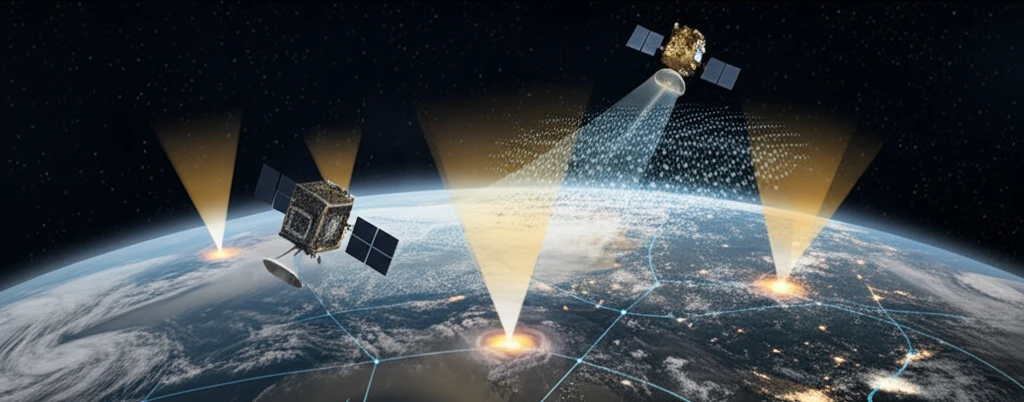
Smarter Satellites: How AI is Revolutionizing LEO Communications
"Unlocking Efficiency with HMM: A Deep Dive into AI-Powered Content Forwarding in Low Earth Orbit Satellite Systems"
Low Earth Orbit (LEO) satellite technology is rapidly transforming how we access high-speed data, making it a focal point in modern communication research. Unlike traditional satellite communication methods that prioritize data transmission rates and reliability, a new approach considers content popularity from the user's perspective. This shift aims to optimize channel resources between LEO satellites and Earth Stations (ESs), and among ESs, ultimately maximizing the content forwarding capacity of the LEO satellite.
The core innovation lies in modeling the content forwarding process of LEO satellites using Hidden Markov Models (HMM). By applying algorithms like Viterbi, an optimal content forwarding strategy can be achieved. This method is complemented by a multi-domain channel resource allocation algorithm based on HMM (MCR-H), designed to fine-tune the LEO satellite communication system for peak efficiency. The early numerical results are promising, highlighting the performance advantages of this novel approach.
This article delves into how AI and sophisticated algorithms are not just incremental improvements but are fundamentally reshaping satellite communications to meet the growing demands of users worldwide. From remote areas to bustling urban centers, the impact of smarter satellite systems is poised to redefine connectivity.
Why Content Popularity Matters: The HMM Approach Explained

Traditional methods of optimizing satellite communication have primarily focused on enhancing data transmission rates and securing reliable links. However, these approaches often overlook a critical factor: the varying demand for specific content among users. Different Earth Stations (ESs) may have vastly different user bases with unique content preferences.
- HMM Benefits: HMM enables the system to learn patterns in content demand.
- Viterbi Algorithm: An algorithm to make optimized, sequential content-forwarding decisions.
- Resource Optimization: By allocating resources based on predicted content demand, the system reduces waste and improves overall throughput.
The Future is Intelligent: Embracing AI in Satellite Communications
The application of AI, particularly through HMMs and sophisticated algorithms, represents a significant leap forward in LEO satellite communication systems. By prioritizing content popularity and optimizing resource allocation, these advancements promise to enhance user experience, reduce energy consumption, and improve overall system efficiency. As LEO satellite technology continues to evolve, the integration of AI will undoubtedly play a crucial role in shaping the future of global connectivity.
